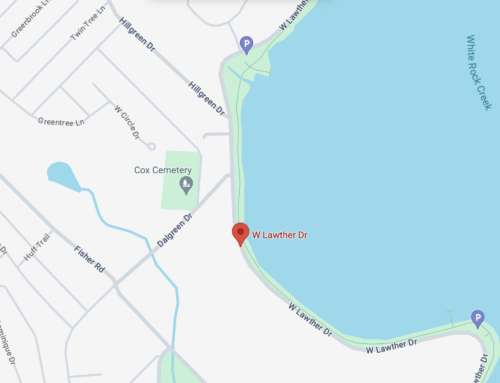Nobody is literally rebuilding “Little Egypt” — one of Lake Highlands’ earliest neighborhoods. No, there is little demand for dirt-road subdivisions lacking running water and sewage systems (which describes Little Egypt even in the late 50s, as new, upper-middle class neighborhoods sprung up all around it). But a Richland College professor and his honors history class aim to virtually bring the historic community back to life.
The land that once housed Little Egypt, just north of Northwest Highway between Ferndale and Audelia, now contains both Northlake Shopping Center and a larger area that showcases large, architecturally interesting homes atop rolling hills, among towering trees and within the attendance zone of quality Richardson ISD schools. Some of the neighborhood’s residents remember Little Egypt, which was in place until the early 1960s. History professor Clive Siegle moved to Lake Highlands near Little Egypt in 1962, when he was a teenager, but at the time he had no idea Little Egypt ever existed.
Today, he lives on Shoreview and recently learned enough about Little Egypt to leave him wanting to know much more.
Siegle was walking when he noticed the concrete changed dramatically from one spot to another on his street.
“I asked my neighbor, who actually lived here in the 60s, about it, and he’s the one who told me about Little Egypt, which was here when he was a teenager. He told me about the fact that right next to his neighborhood of $40,000 homes (relatively expensive in the 60s) was this neighborhood of houses with no running water … all of the roads were made of dirt; the change in the pavement is the spot where the dirt roads of Little Egypt began,” he says. “And I thought, ‘you have to be joking!’ I just couldn’t believe it.”
Siegle was so fascinated that he got together with one of Richland’s anthropology teachers to create an honors history class wherein students are challenged to dig up all the history they can on Little Egypt, the last of which was overtaken by new developers in 1968. Many Little Egypt residents collectively relocated to Oak Cliff.
The students will use historical documents, census data and interviews with people who lived in and near Little Egypt to digitally and virtually reconstruct Little Egypt and tell its story.
“It might take one, two or several semesters to get the whole picture,” Siegle says.
He and his students are “beating the bushes” in an attempt to find interview subjects. The oral histories are going to be a vital piece of the project, he says, so if you or someone you know lived in Lake Highlands or Little Egypt in the 50s and 60s and have any memories whatsoever about Little Egypt (no detail is too small, stresses Siegle), please respond. You can reach Siegle at csiegle@dcccd.edu or 972.238.6121.






